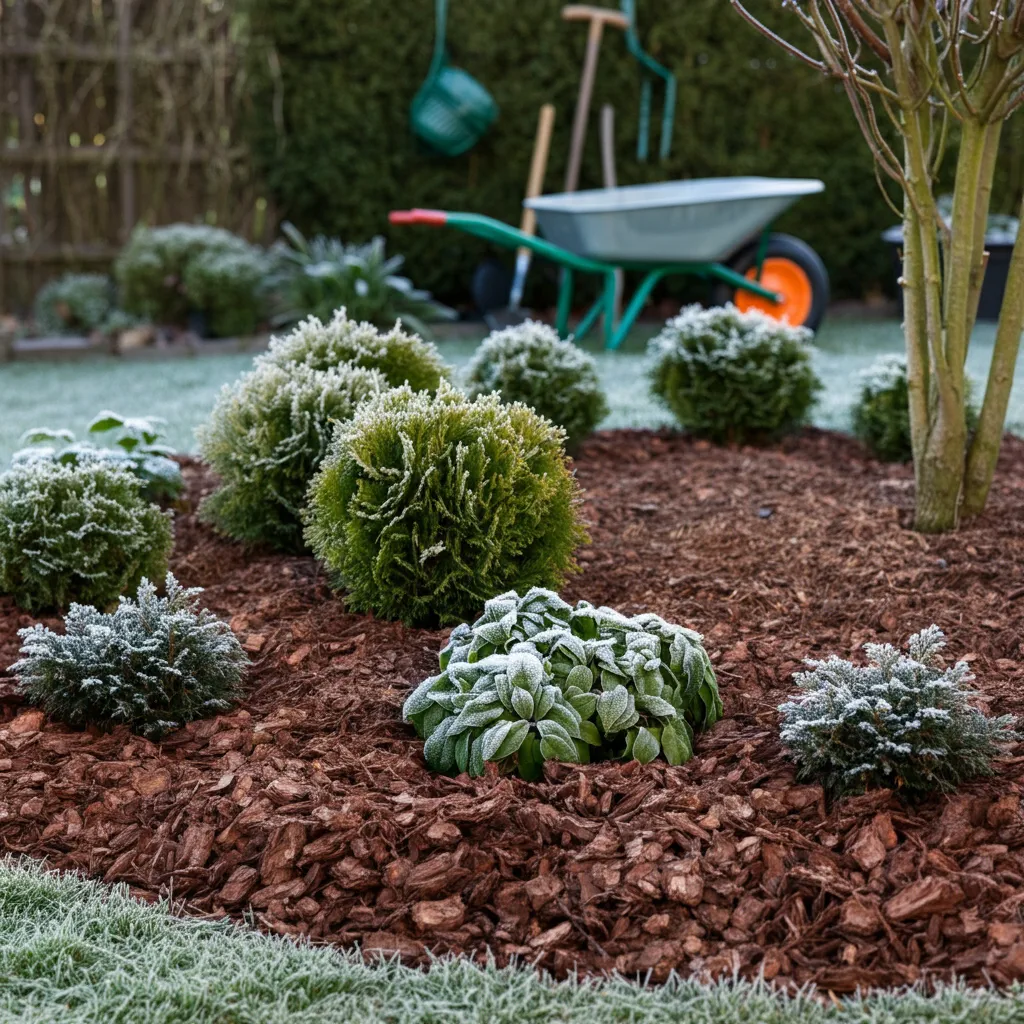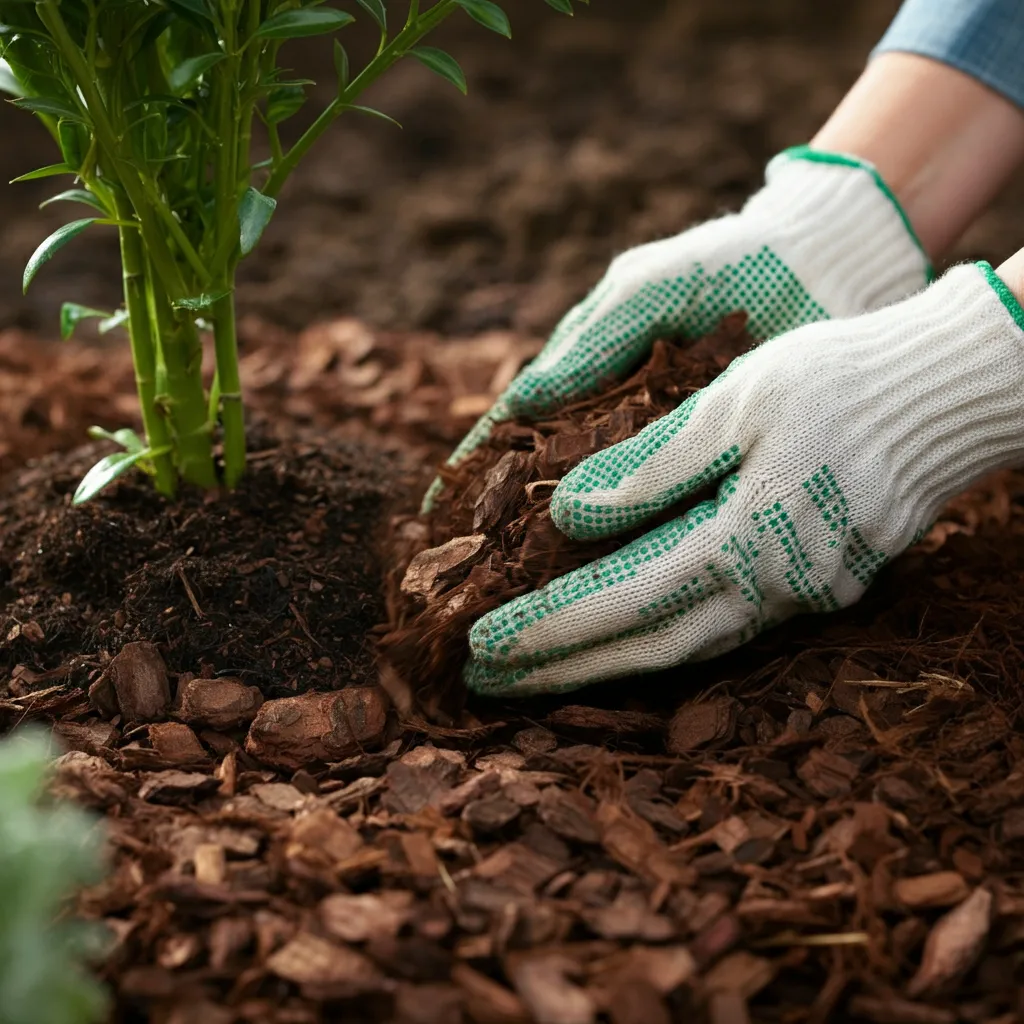Wrap Up Warm with Mulch
As the crisp autumn air settles in and the days grow shorter, our thoughts turn to cosy jumpers and warm drinks. But what about your garden? Just as we pull out our winter duvets, our plants need a protective blanket to shield them from the coming frosts. This is where mulch comes in, a gardener’s secret weapon for ensuring a vibrant, healthy garden come spring. Think of it as a cosy duvet for your plant roots, tucking them in securely for the cold months ahead.
Applying a generous layer of organic matter around your beloved perennials, shrubs, and trees is one of the most effective things you can do to prepare your garden for a British winter. This simple act provides essential insulation, retains precious soil moisture, and even gives you a head start on suppressing those pesky spring weeds. Let’s explore how you can wrap up your garden warm with mulch and reap the rewards next year.
What Exactly is Mulch?
At its core, mulch is simply a layer of material applied to the surface of the soil. Its purpose is to protect and improve the ground beneath it. There are two main categories of mulch: organic and inorganic.
Inorganic mulches include materials like gravel, slate chippings, or plastic sheeting. While these are excellent for creating permanent, low-maintenance areas and suppressing weeds, they don’t add nutrients to the soil.
For winter protection, our focus is firmly on organic mulch. This includes wonderful, natural materials like bark chips, straw, well-rotted leaf mould, or even compost. As these materials slowly decompose, they not only protect the soil but also enrich it, creating a thriving environment for your plants.
Why Your Garden Needs a Winter Mulch
Applying mulch before the first hard frost isn't just a 'nice-to-do' garden chore; it's a vital step in safeguarding your plants against the harshest elements of a UK winter. The benefits are significant and long-lasting.
A Duvet for Your Roots
The primary role of winter mulch is insulation. A thick layer acts like a thermal blanket, regulating the soil temperature. It protects plant roots from the damaging freeze-thaw cycles that can heave plants out of the ground and cause severe stress or even death. By keeping the soil temperature more stable, you give your plants’ root systems a fighting chance to survive the cold unscathed.
Retaining Essential Moisture
Winter can be surprisingly dry. Cold winds and frozen ground can prevent water from reaching plant roots, leading to dehydration. Mulch helps to lock in the moisture that is already in the soil from autumn rains, reducing water loss through evaporation. This creates a small reservoir of moisture that roots can draw upon, keeping the plant hydrated and healthy.
Getting Ahead of Spring Weeds
We all know the frustration of seeing weeds pop up at the first sign of spring, competing with your waking plants for light, water, and nutrients. A thick layer of mulch is a fantastic weed suppressant. It blocks sunlight from reaching dormant weed seeds in the soil, preventing them from germinating. This means less back-breaking weeding for you and a healthier, less competitive start for your garden plants.
How to Apply Mulch for Maximum Effect
Applying mulch is a straightforward task, but a little know-how ensures you get the best results. Follow these simple steps to tuck your garden in for winter.
1. Choose the Right Mulch
For winter protection, you want something that is both insulating and will eventually improve your soil. Excellent choices include:
- Bark Chips: A popular and attractive option. They break down slowly, making them a long-lasting choice for shrubs and trees.
- Well-Rotted Leaf Mould: A gardener's 'black gold'! It's rich in nutrients, fantastic for soil structure, and provides excellent insulation. You can even make your own.
- Straw or Hay: A brilliant, cost-effective option for insulating vegetable beds or protecting tender perennials. Just ensure it's free from weed seeds.
- Garden Compost: If you have a good supply of well-rotted homemade compost, it makes a wonderfully nourishing mulch.
2. Prepare the Ground
Before you start spreading your mulch, a little preparation goes a long way. Wait for a good rainfall so the soil is moist, but not waterlogged. Then, give your beds a final once-over, removing any persistent weeds or fallen debris. This ensures you aren’t trapping unwanted weeds or disease under your protective layer.
3. Apply a Generous Layer
Now for the main event. You want to apply a thick, generous layer of your chosen mulch – aim for about 5-10cm (2-4 inches). Spread it evenly around the base of your perennials, shrubs, and trees, covering the entire root zone. The root zone typically extends to the plant's drip line (the imaginary line on the ground corresponding to the edge of its leaf canopy).
4. Keep a 'Polo Mint' Gap
This is a crucial step that many people miss. Avoid piling mulch directly against the stems of your plants or the trunks of trees. This can trap too much moisture against the plant, leading to suffocation, rot, and creating a welcoming home for slugs and other pests. Always leave a small gap, creating a 'polo mint' shape around the base. This allows air to circulate and keeps the stem healthy and dry.
Common Mulching Mistakes to Avoid
To ensure your mulching efforts pay off, steer clear of these common pitfalls:
- Applying Too Late: The best time to mulch is in mid-to-late autumn, after the soil is moist but before the first hard frost. If you mulch frozen ground, you’ll be insulating the cold in, which is the opposite of what you want to achieve.
- The Mulch Volcano: Piling mulch high up against a plant's stem or tree trunk is a recipe for disaster. This "volcano mulching" invites disease and pests. Always remember the 'polo mint' rule.
- Using the Wrong Material: Fresh wood chips or un-rotted manure can 'rob' nitrogen from the soil as they decompose, starving your plants. Always use well-rotted organic matter for the best results.
Beyond Winter: The Year-Round Benefits
While winter insulation is the immediate goal, the benefits of organic mulch continue long into the growing season. As the mulch slowly breaks down, it releases a steady supply of nutrients into the soil, improving its fertility and structure. It encourages a vibrant ecosystem of beneficial microorganisms and earthworms, which further aerate and enrich the soil.
Plus, a well-mulched bed simply looks fantastic. It provides a neat, uniform finish to your garden borders, making your plants stand out beautifully.
Get Your Garden Ready for Spring
Taking the time to mulch your garden this autumn is an investment in its future health. You’re not just protecting your plants from the cold; you’re building better soil, saving water, and reducing the amount of work you’ll need to do next spring.
So, grab your wheelbarrow and your favourite mulch. Wrap your garden up warm this winter, and you’ll be rewarded with stronger, healthier, and more resilient plants when the world reawakens.













Community Feedback